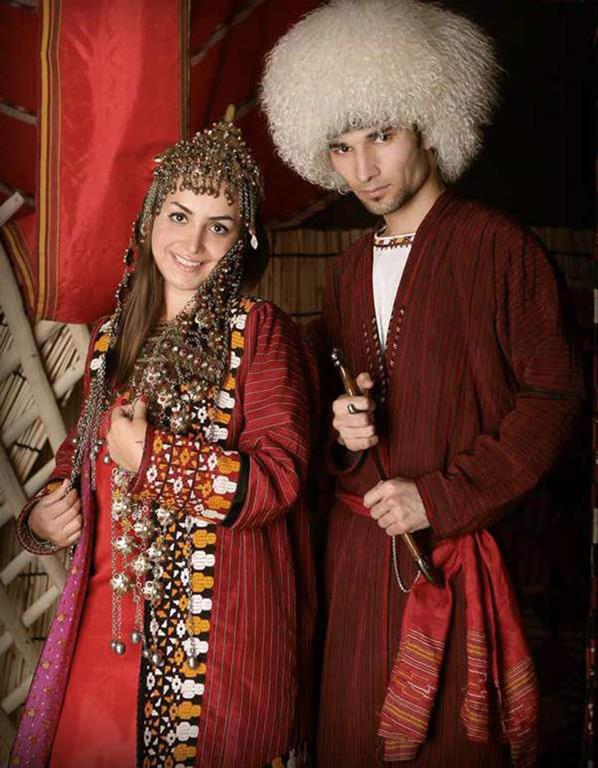Persians or Fars People
They are the largest ethnic group in Iran. They speak Farsi or Persian as Iran’s official language in different accents. Most Persians are Shia Muslims. They mostly live in large cities and make the most part of urban population.
Azerbaijanis or Azeris
This group is largely Shia Muslims. They mainly reside in West and East Azerbaijan provinces in the northwest of Iran close to the border with Azerbaijan. Ardabil and Zanjan are two other main cities they live in. They are scattered throughout other parts of Iran as well. They speak Azeri that is similar to the Turkish spoken in the Republic of Azerbaijan and nearly similar to the Turkish spoken in Turkey.
Azerbaijani cuisine enjoys distinctive features. Koofteh Tabrizi (meatballs made of meat, rice, split peas, and herbs), Dolmeh (minced lamb, rice, aromatic greens wrapped in vine or cabbage leaves), Dovga (the yogurt-based soup), Dushbara (broth made up of dumplings stuffed with minced lamb and herbs), and Bonab kebab are well-known traditional cuisine.
Azeri costume is different among married and unmarried women respecting the marital status. It is not popular in modern cities anymore. It is mostly worn in villages and traditional ceremonies nowadays. For example, the dancers wear Azeri traditional costume while performing the traditional Azeri dance. Women usually wear wide pants or skirt, a long-sleeved shirt, and a cloak. Youngers wear more colorfully clothes. Chukha (upper men’s wear), Kurk (fur coat), Papaq (headwear), and wide pants- wide enough to ride a horse- are some examples of men’s outwear.
A famous traditional Azerbaijani folk music is performed by Ashiqs (the itinerants) playing kopuz- a stringed musical instrument. Azeri traditional dances enjoy a great diversity. They are usually characterized by fast rhythm.
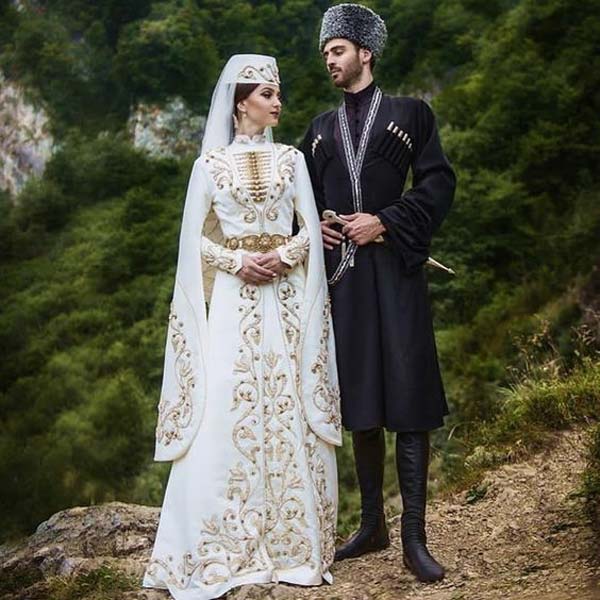
Kurds
The majority of the population of Kurdistan province is composed of Kurd people. They have much in common with Kurds in Turkey and Iraq. They are mostly Sunni Muslims. They speak in the Kurdish language. Rural Kurds are nomadic pastoralists.
One of the Kurdish tribes named Feyli live in the provinces of Kermanshah and Ilam. They are mostly Shia Muslims.
All three provinces mentioned above are located on the northwest of Iran; however, another Kurdish tribe named Kurmanji lives mainly in North Khorasan province on the northeast of Iran. Some also live in the western part of the country.
Kurdish men and women still wear traditional clothes in daily life. Kurdish men usually wear a suit including a matching jacket and baggy pants that become tight at the ankles called pantol. They twist a sash around their waists. They also wrap Keffiyeh around their heads. Its color and the way it is wrapped vary based on the geographical area. Women usually wear a vest or long-sleeved jacket and a belt over a gown. Some wear hats ornamented with gold or coins. Younger women wear colorful dresses adorned with sequins or beads.
Kurdish music and songs reflect epics, love, and separation. They play music with different traditional musical instruments such as tambour, dohol, and kamancheh. Kurdish men and women dance together hand in hand in a circle in different ceremonies. They dance in all of their festivals, and their rhythmic movements originate from their ancient history, lifestyle, beliefs, and wars. Taking hands is the symbol of unity among them during old history.
Kurdish diet includes different kinds of fruits and vegetables. Rhubarb stew, conger stew, and chives stew are some examples of Kurdish cuisine.
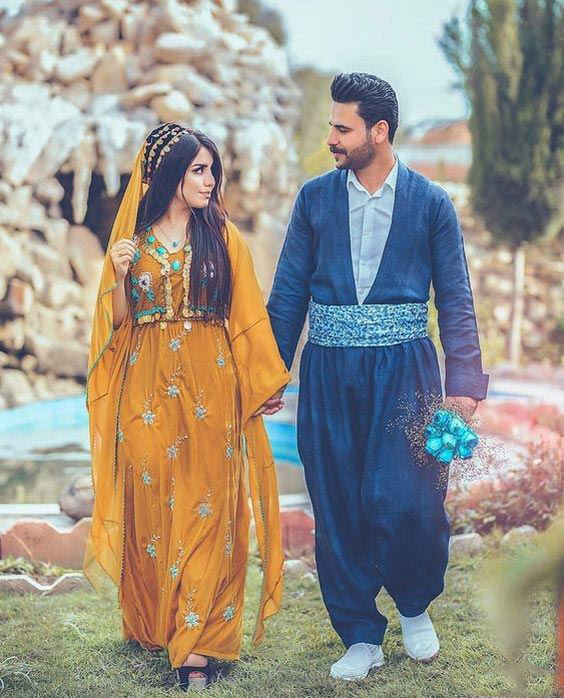
Lors or Lurs
They inhabit Lorestan or Luristan, Khuzestan, Isfahan, Fars, Bushehr, Kuh-Gilu-Boir Ahmad, and Chaharmahal and Bakhtiari provinces on the west and southwest of Iran. Most Lurs are Shia Muslims. They speak Luri. Many of Lurs are nomadic pastoralists. Rural Lurs make different tribes. One of the main and large groups of Lurs is called Bakhtiari. It’s one of the three Lur groups that all together are called the Great Lur. It is controversial on their origin among scholars. Some say they are of Kurdish origin.
Lurish music is so diverse. From among different traditional musical instruments played in ceremonies, Sorna and Dohol are more popular. Lurish people dance in different ceremonies such as a wedding, harvesting, and mourning. Lurish dance is usually done in a group including both men and women wearing traditional colorful clothes. The most common dance is Dastmal Bazi or handkerchief dance. Men or women wave colorful clothes while dancing. Another dance is Chub Bazi or twig dance that brings single combat to mind. The dance men and women dance hand in hand in a circle is called Choupi.
Lurish clothes enjoy such great diversity among different Lur subgroups that it could be considered as a cultural attraction; however, there are still some pieces common among them. Men usually twist a sash around their waists. They usually wear a knee-length garment, a felt hat, Giva- handmade shoes made of spun yarn, and Chuqha- made of sheep wool worn mainly by Bakhtiaris. Women usually wear long collarless dress named Juma, Kolonja- a lace garment worn over clothes usually embroidered with coins, a silk fabric used for covering their heads, and a colorfully patterned headscarf named Golvani that is worn in celebrations. Golvani celebration is held annually on May 16th.
Boroujerdi kebab and kebab Bakhtiari are two of the most famous kebabs in Iran.
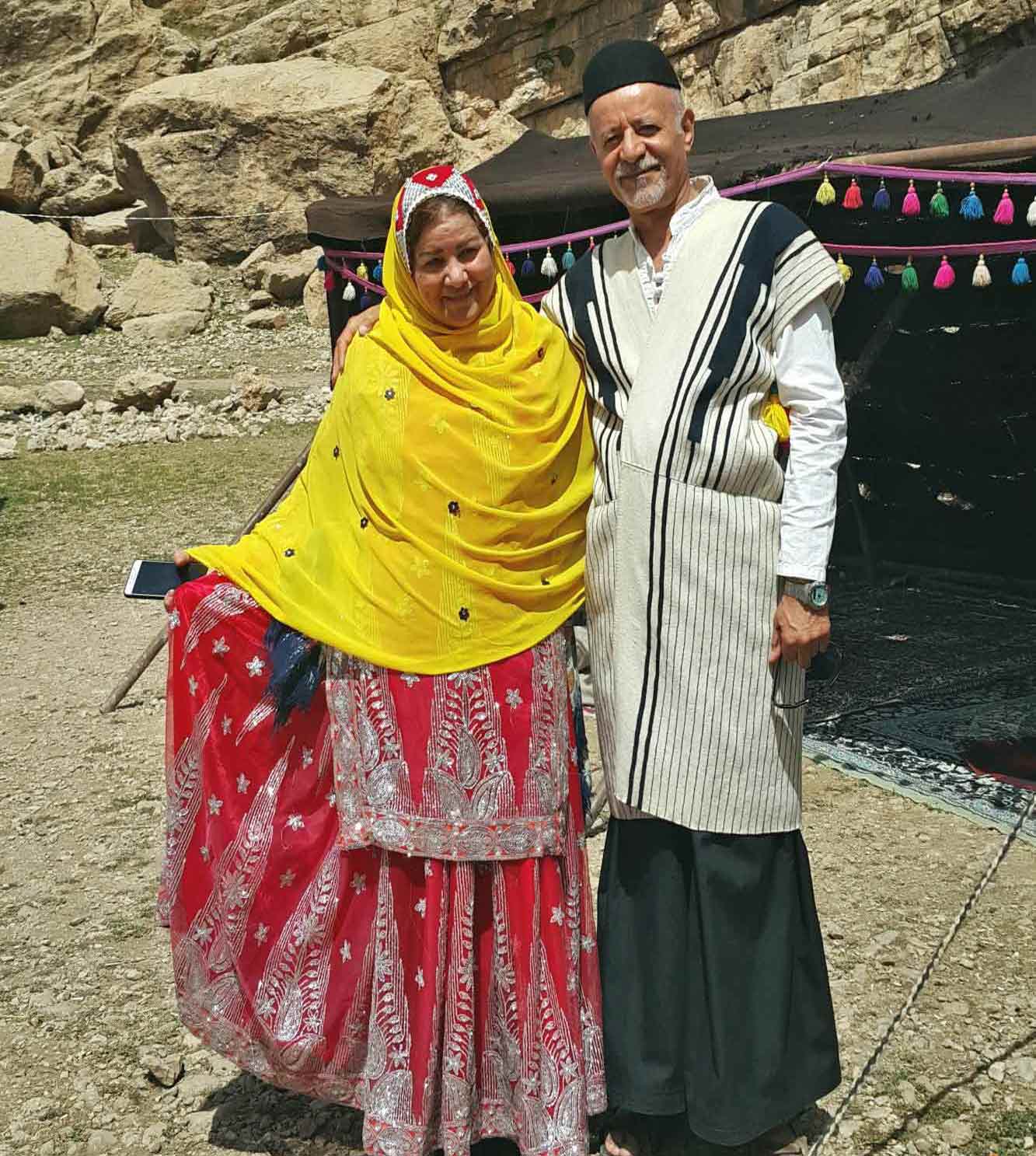
Mazandaranis or Mazanis
They reside in the south coast of the Caspian Sea, the north part of Iran. They speak Mazandarani dialect. Many of them are fishermen or farmers. They have much in common with neighboring Gilaki people. Mazani traditional clothes are very colorful inspired by surrounding nature. Women usually wear a pleated skirt, named Shalite, over their pants in local dances and ceremonies. Men’s clothes differ by their job and the region they live.
Mazandarani’s cuisine is much similar to Gilani’s. Pomegranate paste is an important element in both Mazandarani and Gilani traditional cuisine. Nazkhatoon and Morgh Torsh (sour chicken stew) are two of famous Mazandarani foods.
One of the traditional ceremonies in Mazandaran is a 600-year-old ceremony called Varf Chal that is held every year in May. During the event, only women stay in the village taking over everything, and the men go out of the village to carry the remained pieces of winter snow into the pits under the ground. No man is allowed to stay in the village, except for the old ones. They believe it will provide the earth and animals with water in summer. Nakhl Gardani is another ceremony held across Mazandaran every year in Ashura. Nowruz Mah celebration is held in early August after the first harvesting of rice.
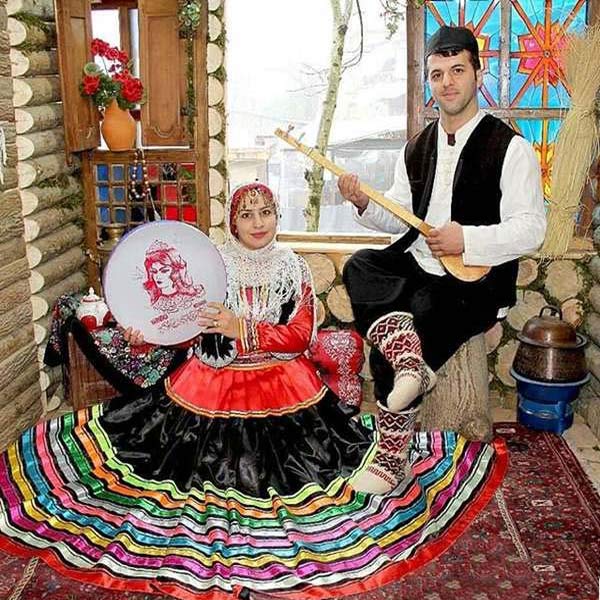
Gilakis
They are native to Gilan province on the south and southwest coastal region of the Caspian Sea. They play the main role in Iran economy by fishing, exporting caviar, and animal husbandry, producing silk and supplying a large part of agricultural products such as rice, tea, and grains. They speak Gilaki dialect.
Gilak women seldom wear black dresses, even in mourning ceremonies. Only elderly women sometimes wear black lachak- traditional head cover. Women of the eastern part of Gilan wear mandil- a coin decorated hat worn under the scarf. They wear Shaliteh- a pleated short skirt- over wide pants. They also wear long skirts with horizontal stripes at the bottom. They wrap chador kamar- a checkered cloth- around their waist while farming or carrying babies on their back. Men wrap a wide cotton belt around their waists.
Gilan province is so rich and diverse in cuisine that Rasht, the capital city of Gilan, designated as UNESCO creative city of gastronomy. Some well-known foods include Baghali Ghatogh, Mirza Ghasemi, Morgh Torsh (sour chicken literally), Kabab Torsh (sour kebab literally), Kateh Kabab (rice without Tahdig and kebab), and Zeytoon Parvardeh (olives marinated in Pomegranate paste). As many Gilani foods include no meat, they could be the best choices for vegetarians. Pomegranate paste is an important element in Gilani traditional cuisines. Fish and seafood are very popular in both Gilan and Mazandaran. Mahi Sefid (literally white fish) in Gilan is very famous all around Iran. Gilan is also the most well-known region for Koloocheh (one of Iranian traditional sweets).
Nowruz Khani- or singing for Nowruz- is a ceremony held in the last days of winter. The singers sing the poems about the coming of the spring while going to the doors of the houses and usually collect some gifts from people. Gileh-Mardi wrestling is usually done in summer or in wedding ceremonies. It is the symbol of bravery and courage. Gilani music is very diverse across the province.
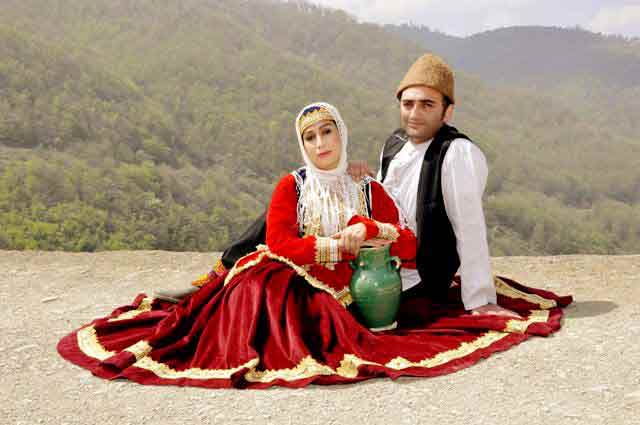
Arabs
Most Arabs live in Khuzestan, Bushehr, and Hormozgan provinces southwest of Iran, along the Iran-Iraq border, on the Persian Gulf islands or along the coast. Many of them are Shia Muslims; the others are Sunni. They speak Arabic.
Their cuisine is mostly made of dates, rice, meat, and seafood. Fish is so popular and it is usually served with rice. Falafel, Sambusa, and Ghalieh Mahi (fish stew) are their well-known savory dishes.
Arab men traditionally wear Dishdasha- an ankle-length long-sleeved robe usually in white color- or Guthra, and Keffiyeh- the headdress. Women usually wear aba or jilbab or chador- a loose black robe covering the body from head to toe, and veil. The tattoo is prevalent among Arab females.
Those living along the Persian Gulf are called Bandari. Their clothes are different. Women wear colorful clothes and some of them wear masks. Men usually wear white long tunic and sandals.
Iranian Arabs have their own music called Bandari. It is characterized by strong fast beat. It is usually accompanied by a fast moving dance. Arab sword dance is performed in special ceremonies in Khuzestan too.
Coffee ritual in Khuzestan has inscribed as a national heritage. It is done in a Mozif– an arched shape structure made out of bamboo sticks.
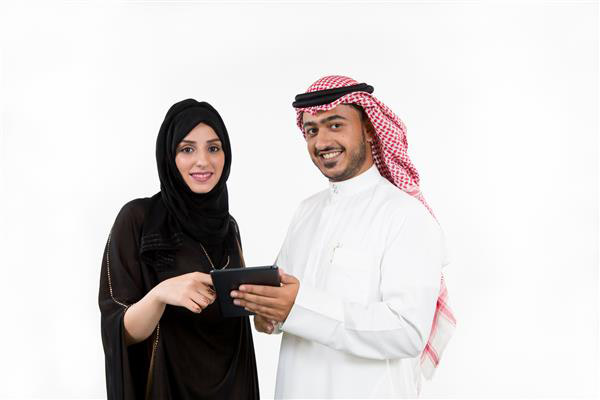
The Baluch
Baluch people live mainly in Sistan and Baluchestan province on the southeast of Iran. They speak Baluchi language (though some linguists consider it as an accent). Baluch people are predominantly Sunni Muslims. They are divided into a number of tribes that the most important ones include Riggi, Shahbakhsh, Naroyee, and Barahooyee. The old traditions and customs play a main role in Baluch people’s lives.
Both men and women wear special kind of clothes in harmony with the climate of the region and their surrounding natural, geographical, and cultural elements. Men usually wear a knee-length shirt, baggy pants, and a turban. Women usually wear a dress with a large pocket in front, pants, and a shawl to cover head. Women’s costumes are richly embroidered by Baluchi Suzandozi (the traditional needlework with embedded small mirror pieces that is one of the most beautiful Iranian handicrafts). Gold ornaments and jewelry, especially rings, are part of their traditions.
The important part of Baluch people’s diet is meat. Baluch men and women in a family usually have meals separately.
Baluch people’s hospitality and generosity to guests is as well-known as their camel racing. They share a common identity with Baluch people of Pakistan and Afghanistan.
One of their nice traditions is called Bjar. It is the financial or material support of families and relatives to the young men who wish to marry. Baluch people celebrate the birth of a child, marriage, circumcision of boys, and religious and social ceremonies with folk music, traditional dance, and food.
Chauk is one of their traditional games played with wood.
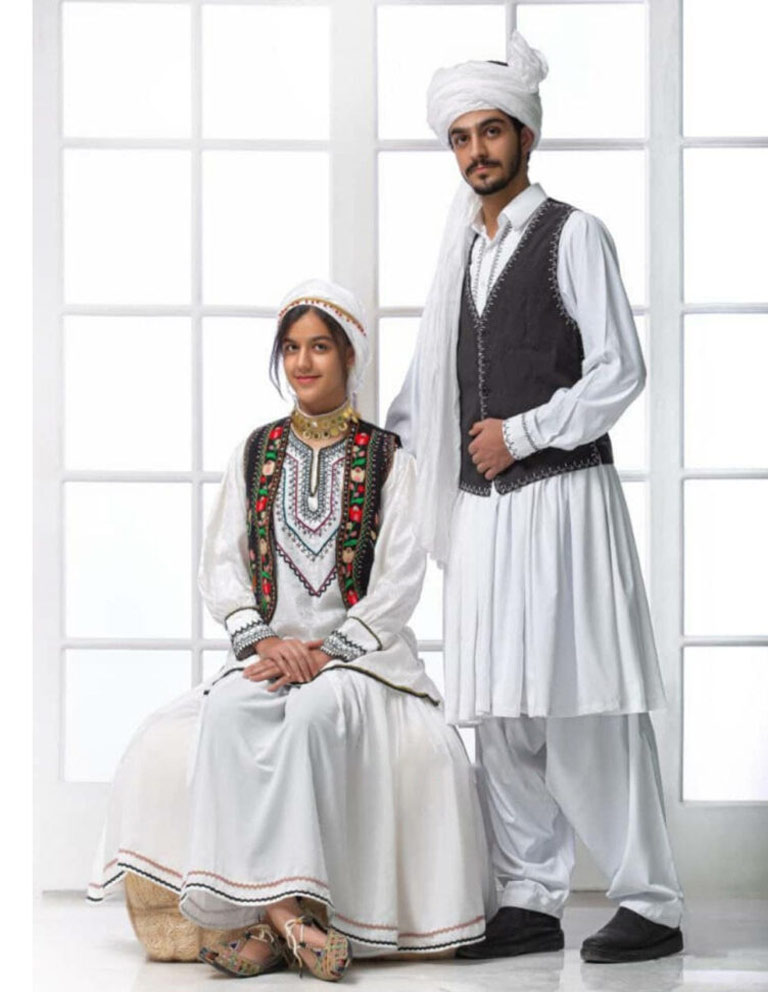
Turkmans
They primarily live in the provinces of Golestan and North Khorasan. They speak one of the dialects of Turkic language that is spoken in the Republic of Turkmenistan. They are mostly Muslims.
Wool hats are the main feature of men’s clothes.
In the family tree of Turkmans, there are names such as Tatar and Turk. The wedding ceremony is of great importance among Turkmans. It is usually held outdoors, men and women separated. As the guests usually come from other villages, the ceremony usually lasts for two or three days. Traditional musical instruments such as tar and dotar are played. A kind of soup named Shurva is served. The bride is taken to the groom’s house in Kajaveh over two camels or mules. Meanwhile, the fastest horseman who gets first to the groom’s house while announcing the bride’s coming will get the prize from the bride’s parents. Horse racing and wrestling are the two contests played in Weddings, religious festivities, and other happy ceremonies. As the horse has a main role in Turkmans’ lives, they start learning horse riding at the age of 5.
There are also numerous minor groups and various tribal Turkic groups such as Qashqai and Shahsavan. The Qashqai territory extends from the south part of Isfahan province to Fars, Khuzestan, and to the Persian Gulf coast. They speak Qashqai, a language from the Turkic language family. Many of them are still nomads, but some of them have become sedentary. The Qashqai nomads travel from pastures in the north of Shiraz at the beginning of cold weather to the pastures near the Persian Gulf in the southwest of Fars.
The nomadic tribes of Iran include different groups of ethnicity such as Turkmans, Turks, Kurds, Lurs, Arabs, and the Baluch.
Other minority groups include Talysh people (in Gilan and Azerbaijan), and Tat people (near Alborz mountains and in the south of Qazvin province). There are also religious minorities in Iran including Assyrians (mostly in Tehran and Urmia), Jews, Mandaeans, Armenians (Christian), Georgians, and Circassians.
